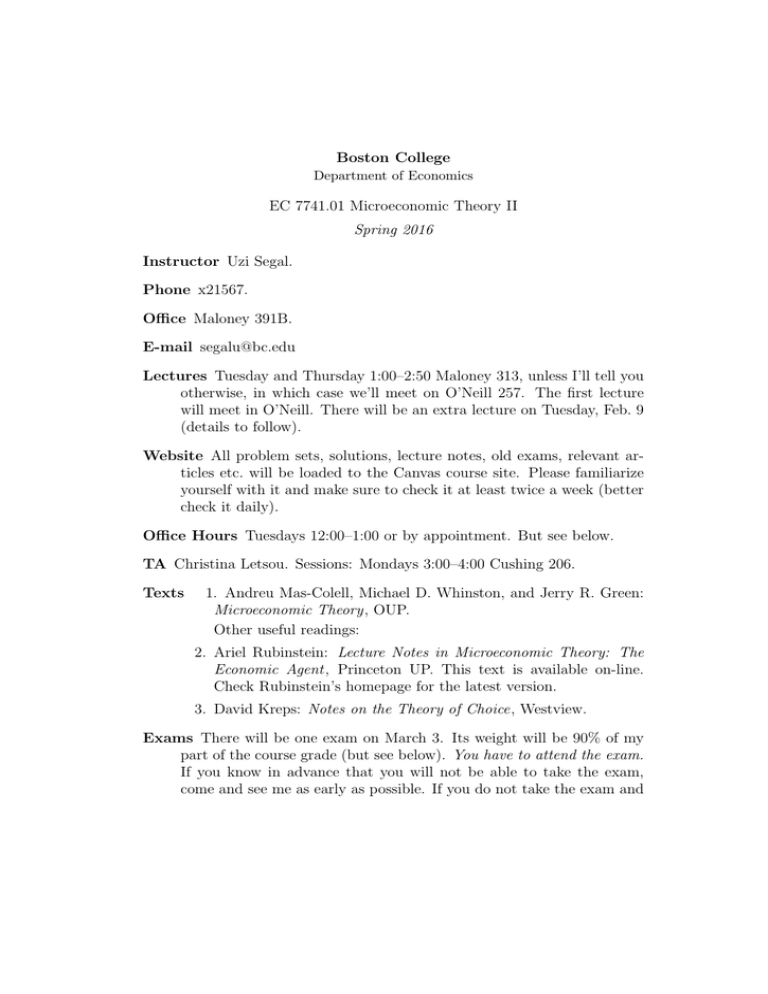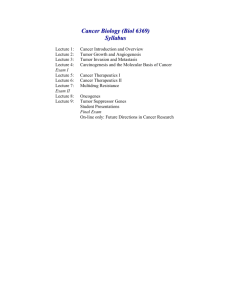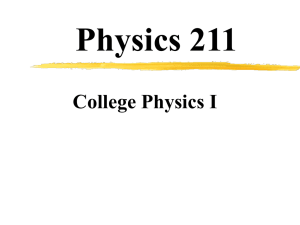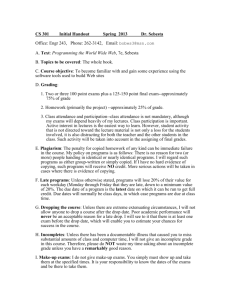Boston College EC 7741.01 Microeconomic Theory II Spring 2016 Instructor Uzi Segal.
advertisement

Boston College Department of Economics EC 7741.01 Microeconomic Theory II Spring 2016 Instructor Uzi Segal. Phone x21567. Office Maloney 391B. E-mail segalu@bc.edu Lectures Tuesday and Thursday 1:00–2:50 Maloney 313, unless I’ll tell you otherwise, in which case we’ll meet on O’Neill 257. The first lecture will meet in O’Neill. There will be an extra lecture on Tuesday, Feb. 9 (details to follow). Website All problem sets, solutions, lecture notes, old exams, relevant articles etc. will be loaded to the Canvas course site. Please familiarize yourself with it and make sure to check it at least twice a week (better check it daily). Office Hours Tuesdays 12:00–1:00 or by appointment. But see below. TA Christina Letsou. Sessions: Mondays 3:00–4:00 Cushing 206. Texts 1. Andreu Mas-Colell, Michael D. Whinston, and Jerry R. Green: Microeconomic Theory, OUP. Other useful readings: 2. Ariel Rubinstein: Lecture Notes in Microeconomic Theory: The Economic Agent, Princeton UP. This text is available on-line. Check Rubinstein’s homepage for the latest version. 3. David Kreps: Notes on the Theory of Choice, Westview. Exams There will be one exam on March 3. Its weight will be 90% of my part of the course grade (but see below). You have to attend the exam. If you know in advance that you will not be able to take the exam, come and see me as early as possible. If you do not take the exam and you do not have a just reason for it, your grade for that exam will be zero. If you take the exam, its grade, whatever it is, will not be waived. Homework There will be 5 problem sets. You have to solve and submit at least 4 of them. You’ll get 2 points for each submitted set, provided you answered at least half of it. You have to submit each problem set one week after the day it was circulated. Two important points. 1. All problem sets must be submitted electronically. You can choose whatever software you wish, but I strongly recommend LATEX (or any other version of TEX. I’m using TeXnicCenter and MiKTEX). 2. The problem sets contain a lot of questions. Please don’t do all of them now (I’ll tell you which to do every week). Keep the rest to prepare for the midterm exam and for the comp exams so that you’ll have a nice supply of fresh questions. 3. A note about joint work: I have no objection to joint works on homework, subject to the following conditions. (a) (b) (c) (d) You try it first by yourself. No more than two students working together. Each submitting his own homework. Each making this known to the reader (eg: I solved q. 4 with John Doe; I did the problem set with Jane Roe). (e) At lest 23 of the problem set is submitted (out of what you were asked to do). Lecture Notes I’ll load to the course website the slides I’ll use during the term. Please print them and bring them to class. These slides are not supposed to substitute for the lectures. Rather, the idea is that you won’t have to write down everything in class. Also, I will provide you with solutions to the problem sets. Their aim is to help those of you who tried to solve a problem and want to check their solution (or to find out where they’ve gone wrong). Please let me know if you find any mistakes in the notes or the solutions. Some Other Points 1. I very strongly encourage you to participate and ask questions. 2 2. Please prepare a “name plate” (by which you want to be addressed). Fold it and put it in front of you during lectures. Create it using bold 72pt fonts in a word document. 3. Please do not use computers in class. They are disruptive, and not very helpful as it is very hard to type math quickly. Moreover, you’ll get my slides. Needless to say, you should not use any other electronic tools in class. 4. No food during lectures, please. Note: Coffee is not food... 5. The best way to communicate with me (except of course for during the lectures or office hours) is by email. I tend to answer emails until 1 or even 2am. Emails sent on Friday afternoon will not be answered till Saturday night. When you send me an email, make sure that the subject is “7741” and that you are using your BC account. Please ask one question per mail. If you have k questions, then send k mails. If you have a question about a file I created (notes, problem sets, old exams, etc.), then please attach the relevant page(s) to your mail. A Note on Academic Integrity You are expected to observe the highest standards of academic integrity. Please review the standards and procedures at http://www.bc.edu/offices/stserv/academic/integrity.html. If you have any questions, please consult with me. Violations will be reported to the Deans’ Office and reviewed by the College’s Committee on Academic Integrity. Course Outline 1. Arrow’s impossibility theorem. 2. Harsanyi’s utilitarian theorem. 3. Expected utility: axioms and theorem. 4. Risk aversion. 5. Insurance. 6. Asymmetric information. 7. Stochastic dominance. 8. Uncertainty (ambiguity). 3 9. Experimental decision theory. 10. Non linear models of decision under risk. 4







